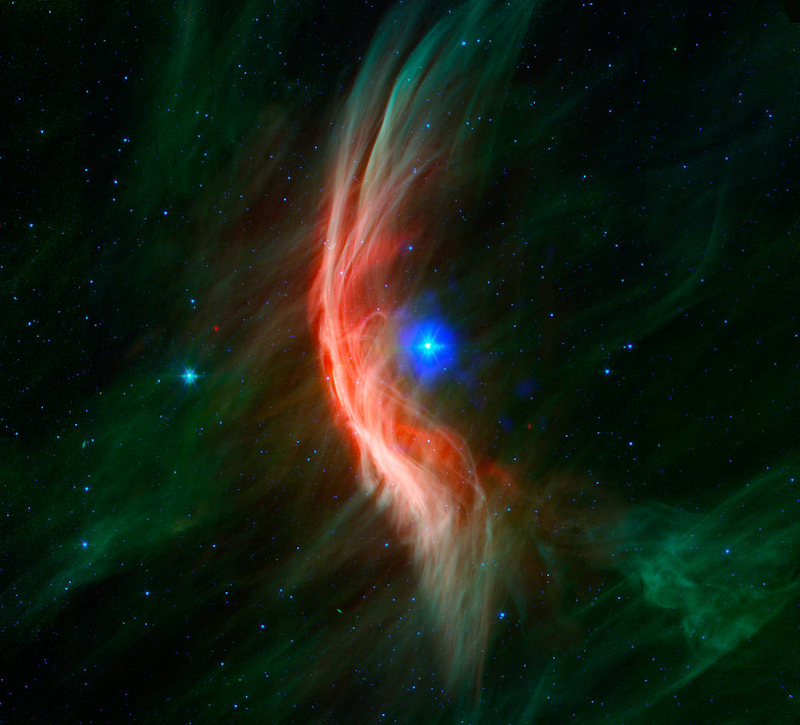
 Credit: X-ray: NASA/CXC/Dublin Inst. Advanced Studies/S. Green et al.; Infrared: NASA/JPL/Spitzer
Credit: X-ray: NASA/CXC/Dublin Inst. Advanced Studies/S. Green et al.; Infrared: NASA/JPL/Spitzer
Shocking Runaway
Some stars are so bright and hot they literally blow themselves apart. The pressure of the radiation produced inside the star can overcome the hold of gravity, creating strong stellar winds which stream from the star into space at speeds of millions of miles per hour, pumping an amount of matter equal to the mass of Jupiter into the galaxy every thousand years or so. One of the closest of these stars to earth is the "runaway" star, Zeta Ophiuchus. Zeta Oph (as it's familiarly known) started out bound to a trusted stellar companion, each quietly orbiting the other, until, about a million years ago, the companion exploded, propelling Zeta Oph through the Milky Way at a speed of about 60,000 miles per hour. The combination of Zeta Oph's speed through the Galaxy and its strong, light-driven stellar wind creates a cosmic bow shock in the Galaxy's interstellar medium, just like you'd see around a boat speeding on a calm lake (but at about 50,000 knots). The image above is a composite infrared and X-ray image of the complex extended shocks around Zeta Oph. The wispy structure in red and green is the infrared emission from the shocked gas and dust at the boundary of the bow shock, as seen by NASA's Spitzer Space Telescope, and which stretches for about ten lightyears from end-to-end. Closer to the star, the bluish region marks a bubble of hot (million-degree) X-ray emitting gas produced by Zeta Oph's fast stellar wind and seen by the cameras on NASA's Chandra X-ray Observatory. Understanding these structures helps us understand the effects of stellar mass loss and motion on the star's home galaxy.
Published: August 1, 2022
<
HEA Dictionary ● Archive
● Search HEAPOW
● Other Languages
● HEAPOW on Facebook
● Download all Images
● Education ● HEAD
>

Each week the HEASARC
brings you new, exciting and beautiful images from X-ray and Gamma ray
astronomy. Check back each week and be sure to check out the HEAPOW archive!
Last modified Tuesday, 27-Feb-2024 10:10:21 EST


